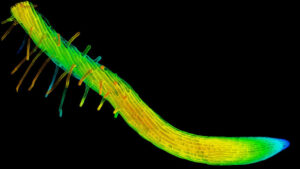
In a groundbreaking study published in Cell Genomics, researchers from Massachusetts General Hospital have unveiled how RNA within extracellular vesicles (EVs) can provide valuable insights into obesity and metabolic diseases. Led by Emeli Chatterjee, PhD, and senior author Saumya Das, MD, PhD, the study explores the potential of EV RNA in understanding and addressing metabolic phenotypes associated with obesity.
The study, which leverages advanced functional genomics approaches, identifies a significant representation of genes and regulatory elements linked to obesity and type 2 diabetes within the RNA cargo of EVs. These transcripts, originating from adipose tissue, are associated with metabolic phenotypes such as body mass index and type 2 diabetes.
Understanding the Circulating EV Landscape
The researchers embarked on this study to investigate the differences in the EV landscape between obese and lean individuals. Their focus was on how the RNA cargo within these EVs varies and how integrating this data with large-scale genetic and transcriptomic databases can enhance our understanding of obesity biology.
To achieve this, the team optimized methods for culturing adipose tissue explants from bariatric surgery patients, allowing for the harvesting and isolation of circulating EVs. This innovative approach, developed in collaboration with Dr. Ravi Shah and Dr. Eric Gamazon from Vanderbilt University Medical Center, integrates EV transcriptomics with population-based ‘omics’ studies, including genome-wide, transcriptome-wide, and phenome-wide association studies.
Key Findings and Implications
The study’s findings reveal that the differences in EV-RNA in obesity are primarily driven by EVs released from adipose tissues. Notably, the RNAs within these EVs originate from various cell types within the adipose tissue. Through functional genomics approaches, 282 transcripts corresponding to 277 unique gene symbols were identified as differentially expressed in circulating EVs between lean and obese individuals.
“Our study outlines a method to integrate EV transcriptomics with large-scale genetic studies. It demonstrates that EV-RNAs, which are differentially expressed in obesity, are linked with genes associated with metabolic phenotypes, such as obesity and type 2 diabetes,” explained Dr. Chatterjee.
The implications of these findings are profound. The study not only provides a roadmap for integrating EV transcript profiling with genetic approaches but also highlights the potential for developing novel diagnostic and therapeutic strategies. This could significantly enhance our ability to predict, prevent, and treat obesity-related diseases.
Future Directions and Research
Looking ahead, the research team is investigating how EV transcripts change with weight loss, whether induced by surgery or medications such as GLP-1 agonists. Additionally, they are exploring how adipose EVs communicate with other cells, including cardiac, liver, and brain cells, to mediate obesity-related comorbidities.
The study’s functional genomics approach has yielded potential targets for treating these conditions, providing a promising avenue for future research and therapeutic development.
This development follows a growing interest in the role of extracellular vesicles in disease processes. As scientists continue to unravel the complex interactions within the human body, studies like this one offer hope for more effective interventions against obesity and its associated health challenges.






